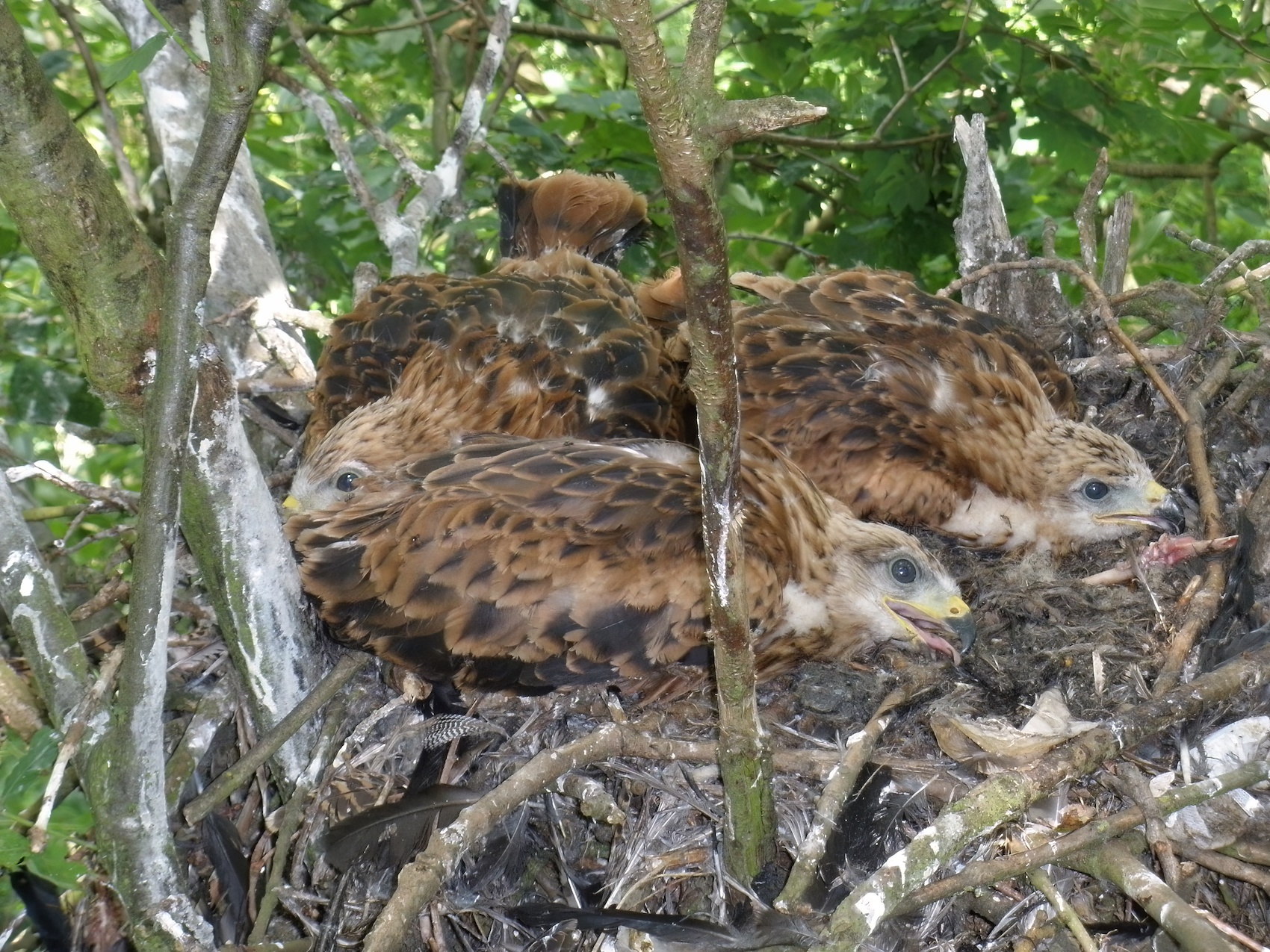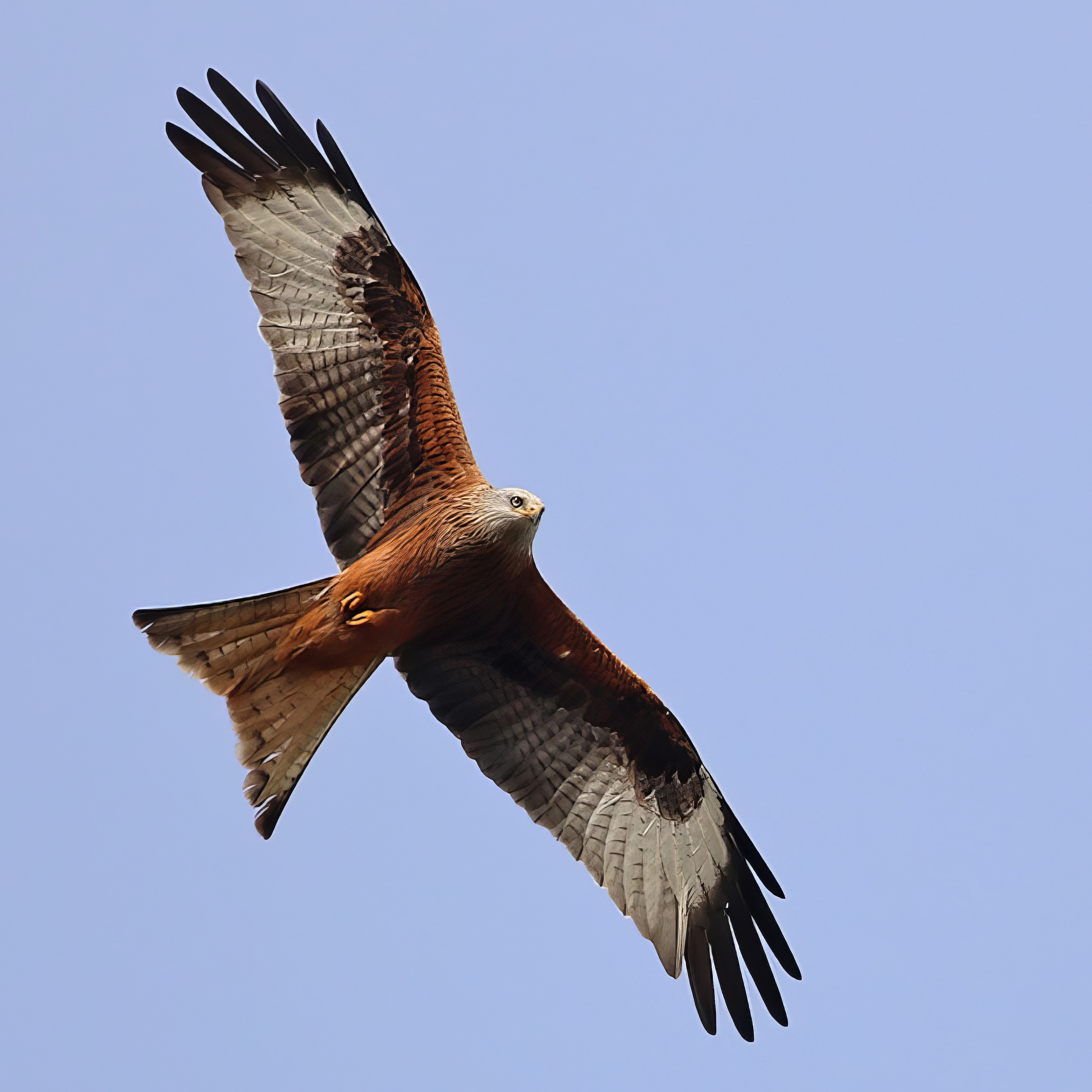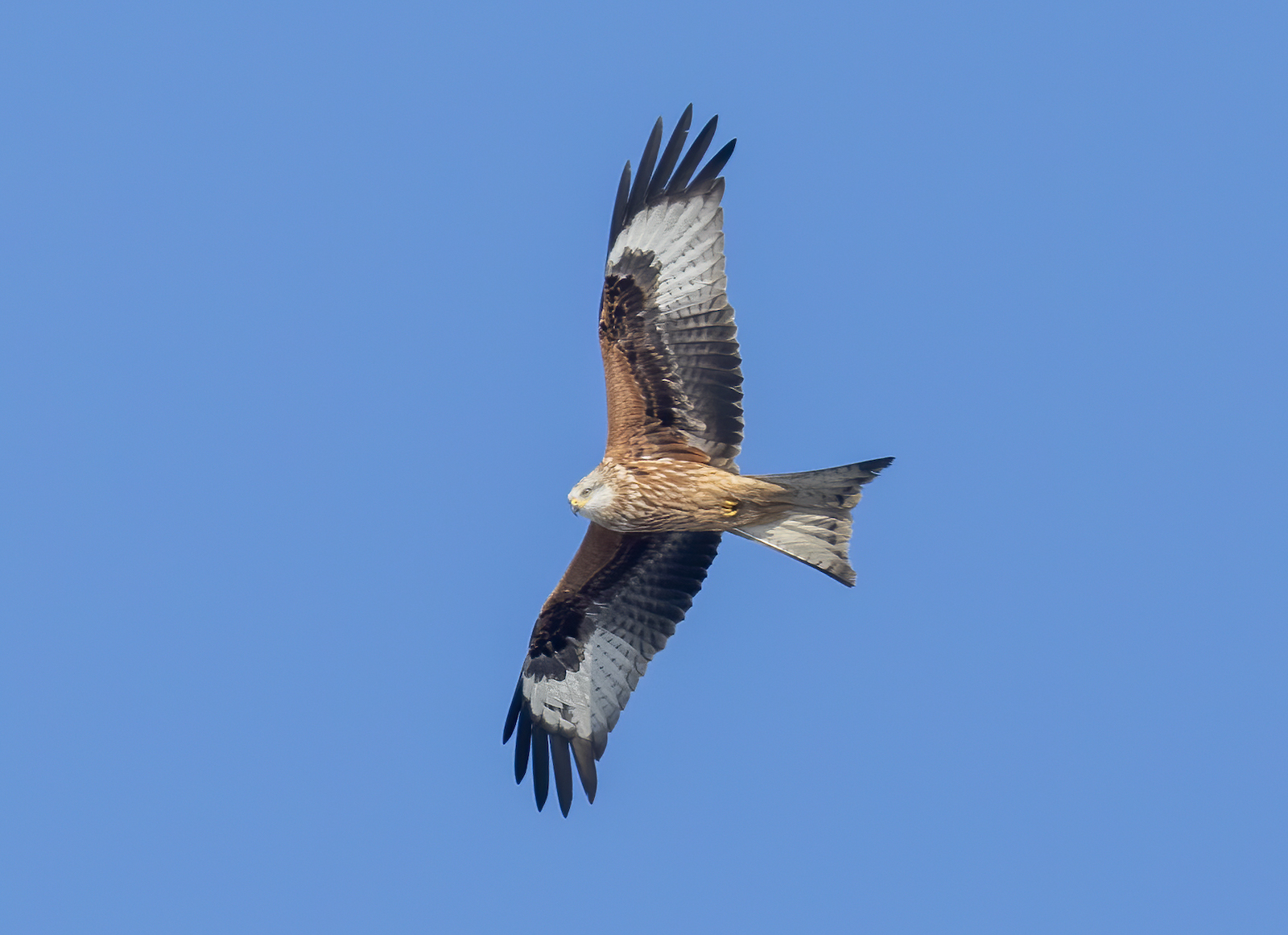Red Kite Milvus milvus
Scarce resident and, from 2008, very scarce and now scarce breeder



Lorand and Atkin (1989) described Red Kites a a very rare vagrant, and the following paragraph is a summary from their text. As was the case with many species, not just raptors, many records were of shot birds. They were said to be not uncommon in several areas in the first half of the 19th century, and in the 1820s still common in large woods near Louth, and regularly seen in the Isle of Axholme and woodlands around Lincoln, Horncastle and Wragby, where 4-5 pairs nested and clutches of eggs were regularly taken. The last nesting attempt was said to have been at Bullington Wood, near Wragby in 1870. There were few records after this date: one at Bottesford, near Scunthorpe, in 1875; at least one over the Humber marshes August 28th, 1878; another shot at Croft Bank, Skegness in 1883; two at North Somercotes October 9th-11th, 1886. There was then a large hiatus with no further records until one was seen April 9th, 1969 at East Fen, Old Leake and probably the same bird April 12th at East Keal. From 1972 to the late 1980s, Lorand and Atkin state that there were around 20 records, mainly from December to April. Nine of these records were in 1988, mid-February to mid-April, perhaps involving 5-6 birds.
This species was not covered by RBBP after 2012, and during the period 2009-2012 an average of 12 pairs per year bred in Lincolnshire. Numbers have continued to increase. A study tracking the increase in 10km square TF02 (Fleming, 2017) showed the scale of the increase in the south-west with a rise from zero in 2009 to 9 in 2013 and 14 in 2017. The return of the Red Kite to the county as a breeding bird has been a slow process and expansion out of the core breeding range in the south-west has taken time but odd pairs have bred away from this area in recent years and the Wolds from where they were extirpated in the 1870s is being prospected. It is possible the population now is over 30 pairs. The bulk of the annual records still refer to wandering immatures, the species does not breed in its first summer, with the traditional peaks in March–June and September–October being apparent from submitted sightings. The peak coastal count to date is of 31 south at Gibraltar Point May 2017. Winter roosts have become established in the south-west with peaks of 25 in 2017 and in the Wolds a winter roost in 2018-2019 held a peak of 14 birds. A wing-tagged bird seen in the county in 2020 originated in Dorset, and recoveries of ringed birds from Cambridgeshire, Northamptonshire, Oxfordshire, Powys, and Yorkshire are reported.
Reference
Fleming, L.V. (2017). Common Buzzards, Red Kites and Ravens in the Soiuth Kesteven uplands: trends in occupied territories and relative abundance from 2003-2017. Lincolnshire Bird Report 2017, 177-182.
(Account as per new Birds of Lincolnshire (2021), included September 2022)
